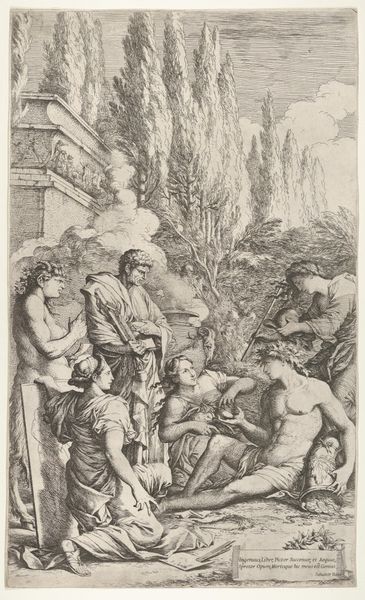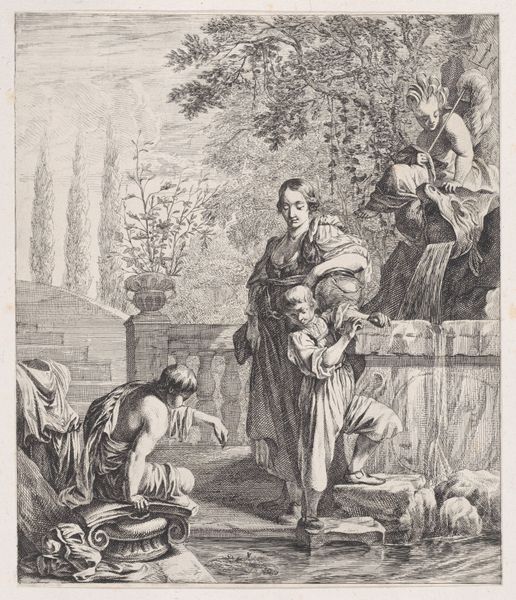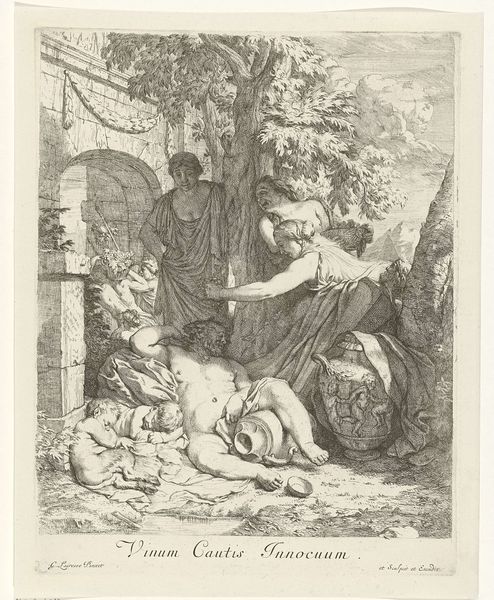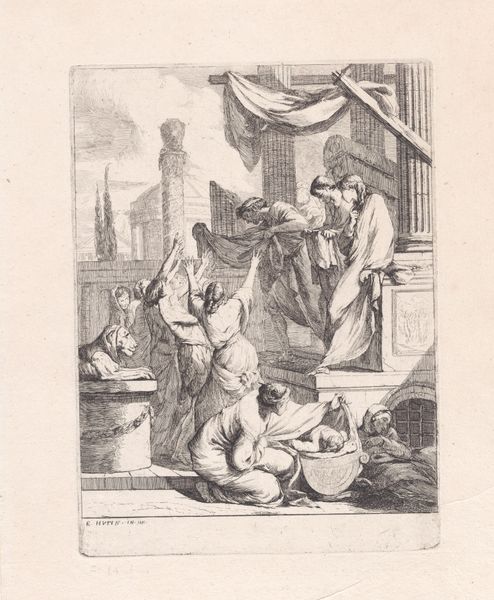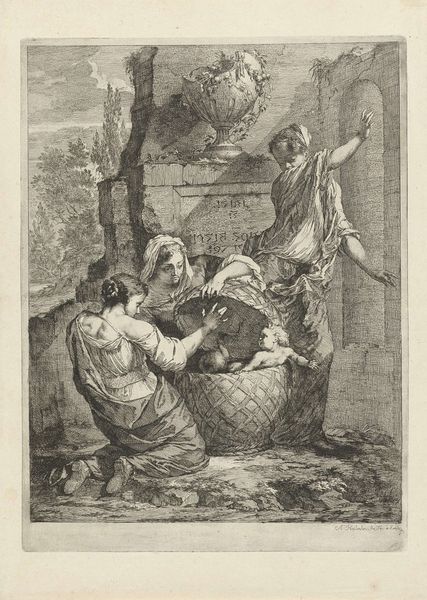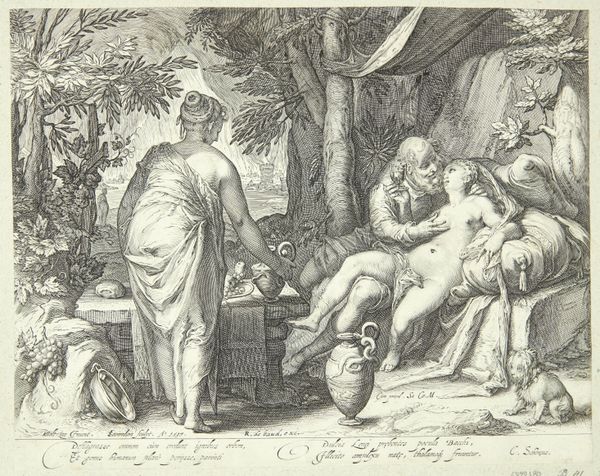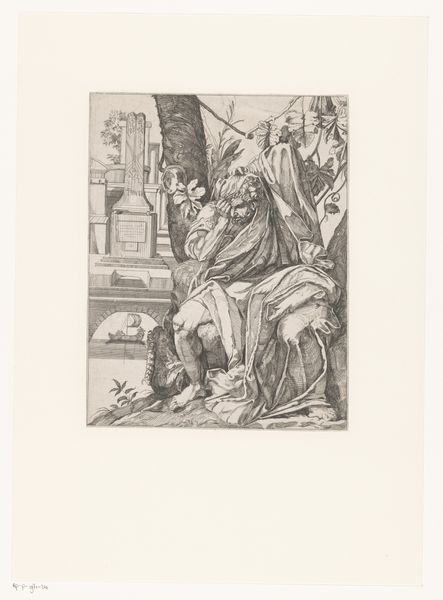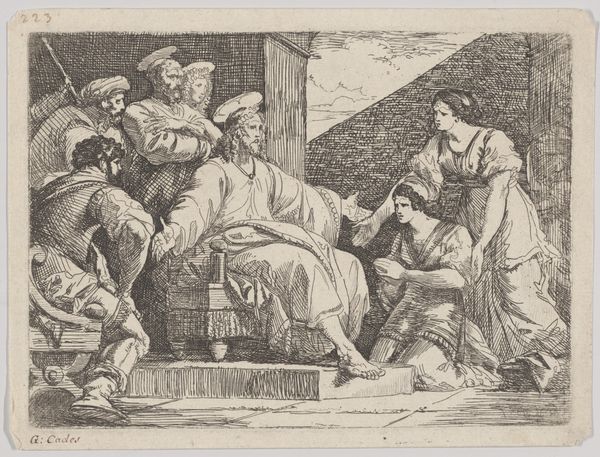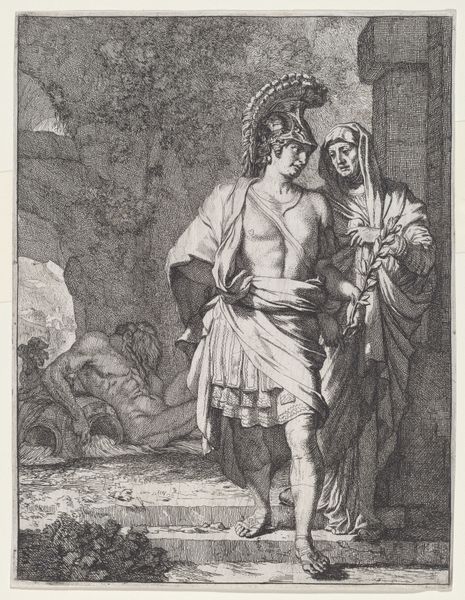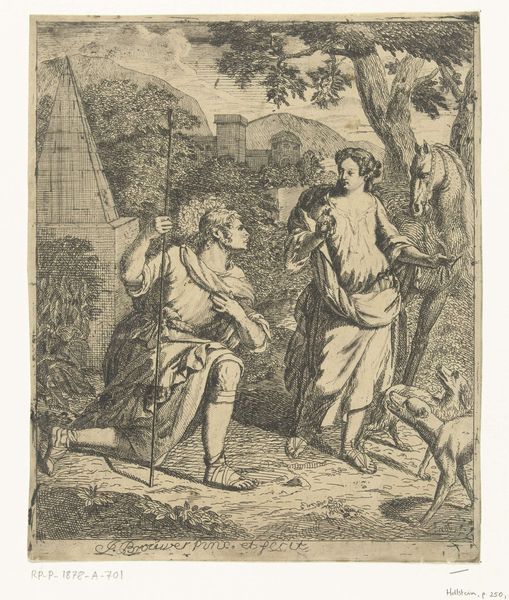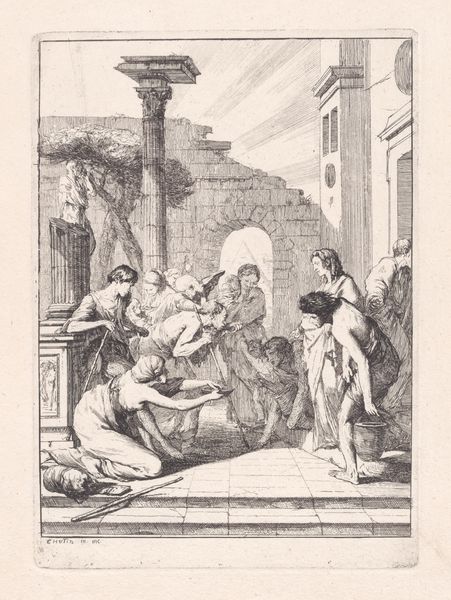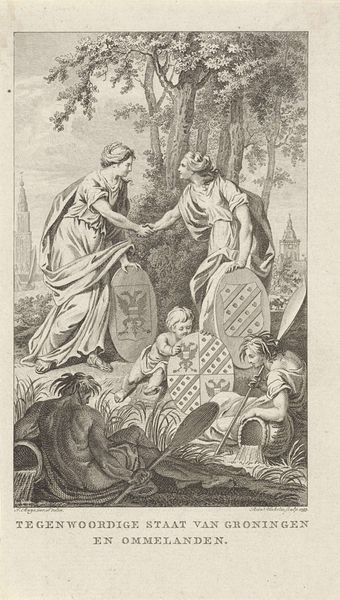
drawing, print, etching, ink, engraving
#
portrait
#
drawing
#
allegory
#
narrative-art
# print
#
etching
#
figuration
#
ink
#
history-painting
#
engraving
Dimensions: Plate: 13 3/16 x 9 13/16 in. (33.5 x 25 cm) Sheet: 16 1/4 x 12 7/8 in. (41.2 x 32.7 cm)
Copyright: Public Domain
"Banditti at Market" was etched by Robert Blyth, probably in the 1770s, using an iron plate covered with an acid-resistant ground, through which the design was scratched. The plate was then bathed in acid, biting lines into the metal, which were then inked and printed onto paper. The linear quality of the etching, achieved through controlled scratching, is crucial. Blyth masterfully conveys textures and tones through carefully placed lines, creating a surprisingly complex image. The social context is also embedded. Etching was relatively accessible, enabling wider distribution of images and ideas. This print participates in that burgeoning visual culture, making commentary on class relations – the "Banditti" in the title suggests criminality, perhaps driven by economic necessity. The work involved in producing an etching - from preparing the plate to pulling the print - reflects a combination of skilled labor, the use of materials, and contextual elements. By looking closely at how this print was made, and why, we can appreciate how its artistic value is intertwined with its cultural significance.
Comments
No comments
Be the first to comment and join the conversation on the ultimate creative platform.
